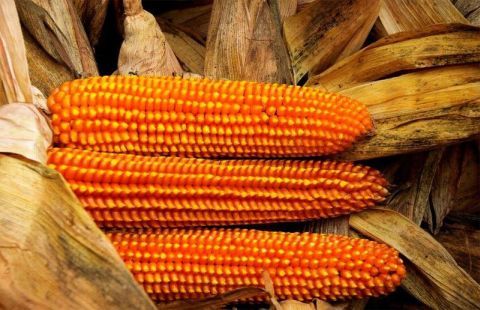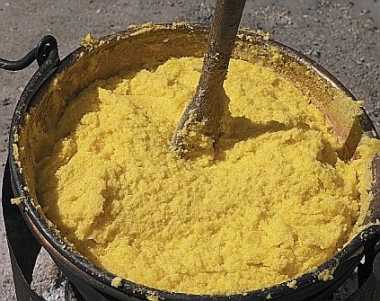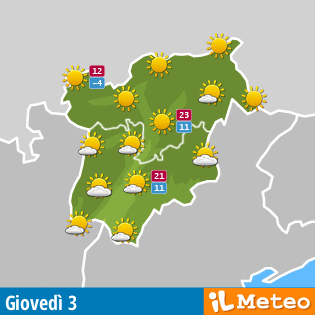Creamy Polenta
The polenta of corn Sponcio is an antique and popular dish
 |
| Italian |

The creamy polenta of corn, in the low Valbelluna, in the whole territory of Dolomiti Bellunesi National Park, is an old tradition. Like the cultivation of a particular variety of corndefined “Sponcio”. The name probably derives from the characteristic of the bean thatpresents a pointed rostrum directed upwards “the ear of the wheat”. All farmers of certainage remember the difficulties that this particularity presented in the shelling made once by hand. It’s one of the rostrum corns most common. You can find storic traces in some texts of the ‘80 years of the of the 800, but it is still alive the memory of the direct witnesses that were replanted from year to year. This speciality for the superior characteristics of the obtained flour.
The characteristics of the beans give the flour a particular consistence that in cooking reveals some characteristic aromas and a particular quality of absortion that guarantees the final result of a substantial and compact polenta typical of mountain flavours. The polente that “stay up” when they are transferred from the “cagliera” (the traditional copper for cooking polenta) symbol of dolomitic boards the drying is still the tradition of the Sun on the trellises and the milling of a medium grain contributes to complete the particular characteristic of this product.

For the creamy polenta of corn the contemporary production of the flours happens with two distinct procedures. The whole wheat flour or semi whole wheat, is ground with stone, through small installations contains the almost totality of components of caryopsis and it presents so pimpled and very fat. The more refined variety is ground by cylinders where is eliminated a part of the grain germ and pericarp.
The coloration remains of intense yellow/orange, but the nutritive power gets considerably diminished, with an imbalance between sugar components and fat parts. Like in all the refined flours particular attention must be kept gor the shelf life of this product. Like all the flours it should be ground hand to hand because if it’s kept cool, it shouldn’t, once macinated be conserved for more than sixty to seventy days.
The preparation and consumption of creamy polenta of corn

The traditional cooking of the polenta of corn happens till today in the pots of copper with a conacle shape that are blackened in the kitchen stoves where wood is used to cook, and powered by the flames of the fine wood to keep the characteristic cooking dormant. The cooking varies between 50/60 minutes, stirring continuosly, with a special wooden oar using the particular technique that brings part of the dough from the bottom of the pot to the surface. When it’s ready it is put on a wooden chopping board and left to rest some minutes. Then the puritans would want to use exclusively the string to cut the slices. While commonly, a wooden knife is used for accompany there are no limits.
The polenta represents the prepared base of cereal that is the platform of all the supply. From the sources of condiment, to the roasted to raw and cooked cheese to cured meat. What remains cut into slices, becomes subsequently toasted on the plate to continue to accompany the subsequent further meals.
